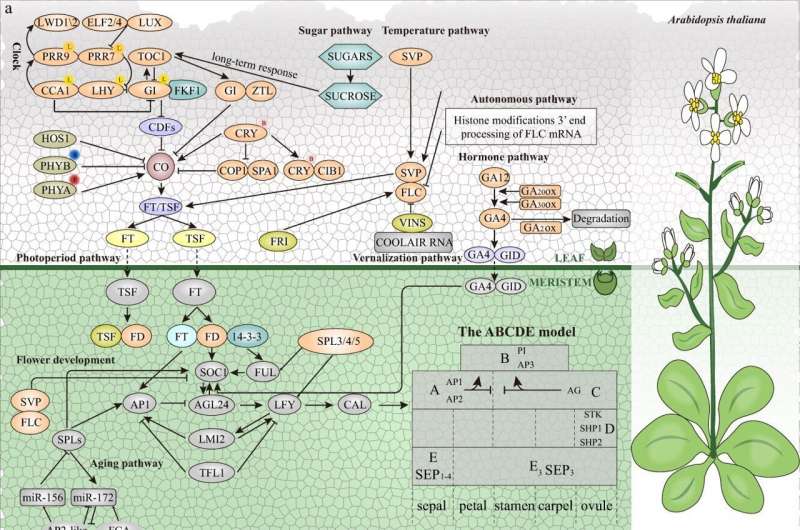
Flowering is a crucial biological process in angiosperms, impacting ecological balance and horticultural value. Despite extensive studies, the regulatory mechanisms of flowering genes remain incompletely understood due to the vast diversity among plant species.
Previous research has focused on individual species or pathways, leaving a gap in comprehensive cross-species analyses. Based on these challenges, an in-depth study was necessary to compile and analyze flowering genes across a broad spectrum of plant species, to provide a unified platform for exploring flowering gene regulation and interactions.
A recent study details the identification and comparative analysis of flowering genes from 837 angiosperm species, resulting in the creation of an extensive Plant Flowering-time Gene Database (PFGD).
The research team, from North China University of Science and Technology, in collaboration with Aarhus University and Hebei Normal University of Science and Technology, published their results on January 10, 2024, in the journal Horticulture Research.
The study undertakes a comprehensive analysis of flowering genes, identifying 183,720 genes across eight regulatory pathways, including photoperiod, vernalization, autonomous, circadian clock, temperature, aging, hormone, and sugar pathways, as well as the ABCDE model. The research highlights the identification of 10,155 ABCDE model genes, crucial for understanding plant flowering regulation.
By examining gene expression patterns and constructing interaction networks between ABCDE model genes and their upstream regulators, the study offers a detailed blueprint of the flowering process. Furthermore, the research predicts miRNA and target genes associated with flowering, providing a deeper understanding of regulatory mechanisms.
The PFGD serves as a centralized platform, enabling researchers to access and analyze gene data, facilitating cross-species comparisons and functional genomics studies. This pioneering effort represents the first large-scale, cross-species analysis of flowering genes, offering valuable insights and resources for the scientific community.
Dr. Xiaoming Song, the senior researcher, stated, “The establishment of the Plant Flowering-time Gene Database marks a significant milestone in plant genetics.
“This comprehensive resource enables researchers to delve into the intricate regulatory networks of flowering genes across diverse species, paving the way for advancements in both fundamental and applied plant sciences.
“We believe this database will become an indispensable tool for scientists studying plant development, adaptation, and evolution.”
The findings have profound implications for agriculture, potentially optimizing crop flowering times for better productivity and climate adaptation. The PFGD database serves as a cornerstone for global research, enabling exploration of plant genetics and unlocking new strategies for crop improvement and biodiversity conservation.
This pioneering work significantly advances our understanding of plant biology, transforming horticulture and agriculture.
More information:
Tong Wu et al, Flowering genes identification, network analysis, and database construction for 837 plants, Horticulture Research (2024). DOI: 10.1093/hr/uhae013
Citation:
Plant flowering gene atlas paves the way for advanced horticultural studies (2024, June 5)
retrieved 5 June 2024
from https://phys.org/news/2024-06-gene-atlas-paves-advanced-horticultural.html
This document is subject to copyright. Apart from any fair dealing for the purpose of private study or research, no
part may be reproduced without the written permission. The content is provided for information purposes only.







